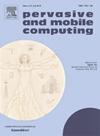LiteFlex-YOLO:A lightweight small target detection network for maritime unmanned aerial vehicles
IF 3.5
3区 计算机科学
Q2 COMPUTER SCIENCE, INFORMATION SYSTEMS
引用次数: 0
Abstract
With frequent maritime activities, the number of overboard accidents at sea has increased, and rescue delays often lead to people being killed. Unmanned Aerial Vehicles (UAVs) have the advantages of fast localization and real-time monitoring in rescue, but the images taken by UAVs have many small targets, and the detection accuracy is insufficient; at the same time, target detection algorithms are difficult to be deployed due to the limitation of computational resources of UAVs. For this reason, this paper proposes a lightweight target detection model based on YOLOv8s improvement, LiteFlex-YOLO, which aims to improve the performance of target detection in UAVs sea rescue. Firstly, the small target sensing ability of the model is enhanced by introducing the P2 small target detection layer, secondly, replacing the C2f module with the lightweight C2fCIB module reduces the computational complexity to make the model more lightweight, furthermore, the feature extraction ability of the backbone is enhanced by using the ODConv (Omni-Dimensional Dynamic Convolution); Lastly, the attention mechanism of SimAM (Simple Attention Module) is introduced to enhance the attention of the key feature information. The final experimental results showed that, LiteFlex-YOLO achieves a [email protected] of 69.5% on the SeaDronesSee dataset, which is 18.2% improvement compared to YOLOv8s, and the model parameters are reduced to 71.2% of YOLOv8s. Moreover, compared with other SOTA algorithms, LiteFlex-YOLO performs excellently in small object detection accuracy, model lightweighting, and robustness.
LiteFlex-YOLO:用于海上无人机的轻型小型目标探测网络
随着海上活动的频繁,海上落水事故增多,救援延误往往导致人员死亡。无人机在救援中具有快速定位和实时监控的优点,但无人机拍摄的图像中小目标较多,检测精度不足;同时,由于无人机计算资源的限制,目标检测算法难以部署。为此,本文提出了一种基于YOLOv8s改进的轻型目标检测模型LiteFlex-YOLO,旨在提高无人机海上救援目标检测性能。首先,通过引入P2小目标检测层,增强了模型的小目标感知能力;其次,用轻量化的C2fCIB模块取代C2f模块,降低了计算复杂度,使模型更加轻量化;进一步,利用ODConv(全维动态卷积)增强了主干的特征提取能力;最后,引入SimAM (Simple attention Module)的注意机制,增强对关键特征信息的注意。最终实验结果表明,LiteFlex-YOLO在SeaDronesSee数据集上达到了69.5%的[email protected],比YOLOv8s提高了18.2%,模型参数降低到YOLOv8s的71.2%。此外,与其他SOTA算法相比,LiteFlex-YOLO在小目标检测精度、模型轻量化和鲁棒性方面表现优异。
本文章由计算机程序翻译,如有差异,请以英文原文为准。
求助全文
约1分钟内获得全文
求助全文
来源期刊

Pervasive and Mobile Computing
COMPUTER SCIENCE, INFORMATION SYSTEMS-TELECOMMUNICATIONS
CiteScore
7.70
自引率
2.30%
发文量
80
审稿时长
68 days
期刊介绍:
As envisioned by Mark Weiser as early as 1991, pervasive computing systems and services have truly become integral parts of our daily lives. Tremendous developments in a multitude of technologies ranging from personalized and embedded smart devices (e.g., smartphones, sensors, wearables, IoTs, etc.) to ubiquitous connectivity, via a variety of wireless mobile communications and cognitive networking infrastructures, to advanced computing techniques (including edge, fog and cloud) and user-friendly middleware services and platforms have significantly contributed to the unprecedented advances in pervasive and mobile computing. Cutting-edge applications and paradigms have evolved, such as cyber-physical systems and smart environments (e.g., smart city, smart energy, smart transportation, smart healthcare, etc.) that also involve human in the loop through social interactions and participatory and/or mobile crowd sensing, for example. The goal of pervasive computing systems is to improve human experience and quality of life, without explicit awareness of the underlying communications and computing technologies.
The Pervasive and Mobile Computing Journal (PMC) is a high-impact, peer-reviewed technical journal that publishes high-quality scientific articles spanning theory and practice, and covering all aspects of pervasive and mobile computing and systems.
 求助内容:
求助内容: 应助结果提醒方式:
应助结果提醒方式:


